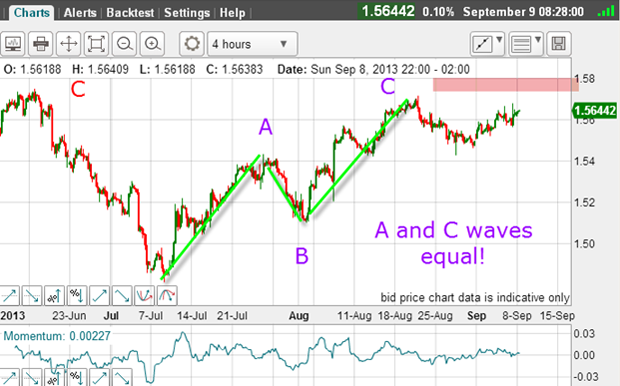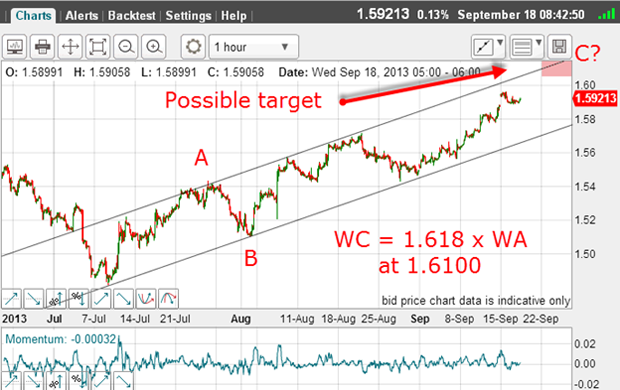The GBP/USD defies my chart analysis
Traders can never be completely sure of the markets, explains John C Burford. That's why you must have a reliable system to limit your losses.
Market forecasting is about percentage odds. Every trader needs a method or system where he or she can make an educated guess as to the odds of success for any particular trade.
Not only that, but you must have an escape plan a way of telling you that your analysis is wrong and to pinpoint exactly when to exit your trade.
Yes, there are traders who fly by the seat of their pants and who instinctively can judge which way to trade and when to enter and exit, seemingly without using any system.
Subscribe to MoneyWeek
Subscribe to MoneyWeek today and get your first six magazine issues absolutely FREE

Sign up to Money Morning
Don't miss the latest investment and personal finances news, market analysis, plus money-saving tips with our free twice-daily newsletter
Don't miss the latest investment and personal finances news, market analysis, plus money-saving tips with our free twice-daily newsletter
But if you know you do not possess such skills, it is best to rely on methods that have proven themselves over time. That is what I attempt to convey in these posts.
I set out methods that can point to sensible trade entries based on my tramline, Fibonacci and Elliott wave inputs. These are trades that have high success probability.
But because most things are possible in the markets, we must also allow for the possibility that the markets will not follow the script and defy our analysis.
That is when you need a system that tells you where to abort the trade in other words, where to place your protective stop.
A good example of this recently was in the GBP/USD from 9 September.
The markets rule themselves

The market was in a general downtrend from January and it appeared the rallies since then were all counter-trend.
That means that any A-B-Cs were likely to be counter-trend, and not the start of a new bull move. That is the main conclusion I could draw from a scan of the daily chart.
Then, after identifying the C wave extreme, I could set up a high probability trade and a close stop could be employed.
This was beautifully illustrated here with wave C = wave A, which is a common wave relationship.
That was the place to enter, with protective stop above the C wave extreme in the pink zone.
And sure enough, the market started to decline straight away after putting in the C top.
The market did fall far enough to enable my break-even rule to be invoked.
But after making the low just above 1.54, the market reversed course and moved through my break-even stop and went on to new highs above the old C wave.
That meant my original analysis was incorrect.
This does happen! Not every set-up works perfectly. Markets have their own lives and we must always stay humble.
But when you do get it right, and the market moves as you expected, that is the time to make hay.
Also, all traders get into slumps just like in sport.
The key factor is to keep your losses at a bare minimum, waiting for the good times to return. Disciplined and rigorous use of my break-even rule is of great help here. I consistently stick to a number of rules in my trading.
The outcome of the Fed's announcement

I can draw in a terrific tramline pair with the upper line having a solid prior pivot point (PPP).
If we still are in an A-B-C pattern, then another wave relationship that occurs quite often is for wave C to be 1.618 times wave A. The multiplier 1.618 is of course, the golden ratio and is the root number in the Fibonacci sequence.
This projects a possible target at the 1.61 level.
And this level lies precisely on my upper tramline. Isn't that pretty?
So I have two independent methods telling me a likely target is 1.61.
But since today could be a watershed for the dollar (and most other markets), we could see a turnaround here and then my target would be missed.
If this occurs, because the upper tramline would be missed, that would be a sign of weakness and indicate the top could be in.
If the market gets a boost from the Fed, then the 1.61 level would be a high percentage play for upper target.
I am going to sit out on this one as I would be making a complete coin-toss on the outcome of today's revelations. And I prefer to have a better method than that to judge my trades.
Get the latest financial news, insights and expert analysis from our award-winning MoneyWeek team, to help you understand what really matters when it comes to your finances.
John is is a British-born lapsed PhD physicist, who previously worked for Nasa on the Mars exploration team. He is a former commodity trading advisor with the US Commodities Futures Trading Commission, and worked in a boutique futures house in California in the 1980s.
He was a partner in one of the first futures newsletter advisory services, based in Washington DC, specialising in pork bellies and currencies. John is primarily a chart-reading trader, having cut his trading teeth in the days before PCs.
As well as his work in the financial world, he has launched, run and sold several 'real' businesses producing 'real' products.
-
 How does the Lifetime ISA work? Key LISA rules
How does the Lifetime ISA work? Key LISA rulesWhat is a Lifetime ISA (LISA) and how much could the government bonus boost your savings by? We look at the perks and the pitfalls.
-
 AJ Bell: a fine British fintech going cheap
AJ Bell: a fine British fintech going cheapOpinion Don’t overlook investment platform AJ Bell, a significantly undervalued British business with an excellent financial base